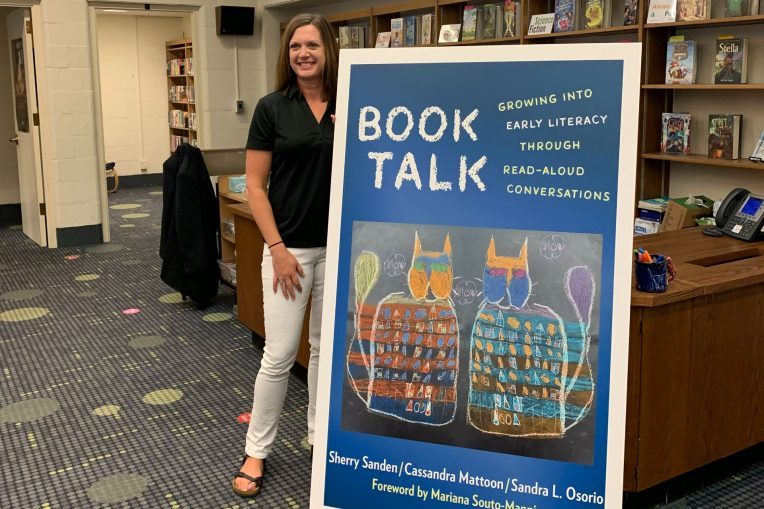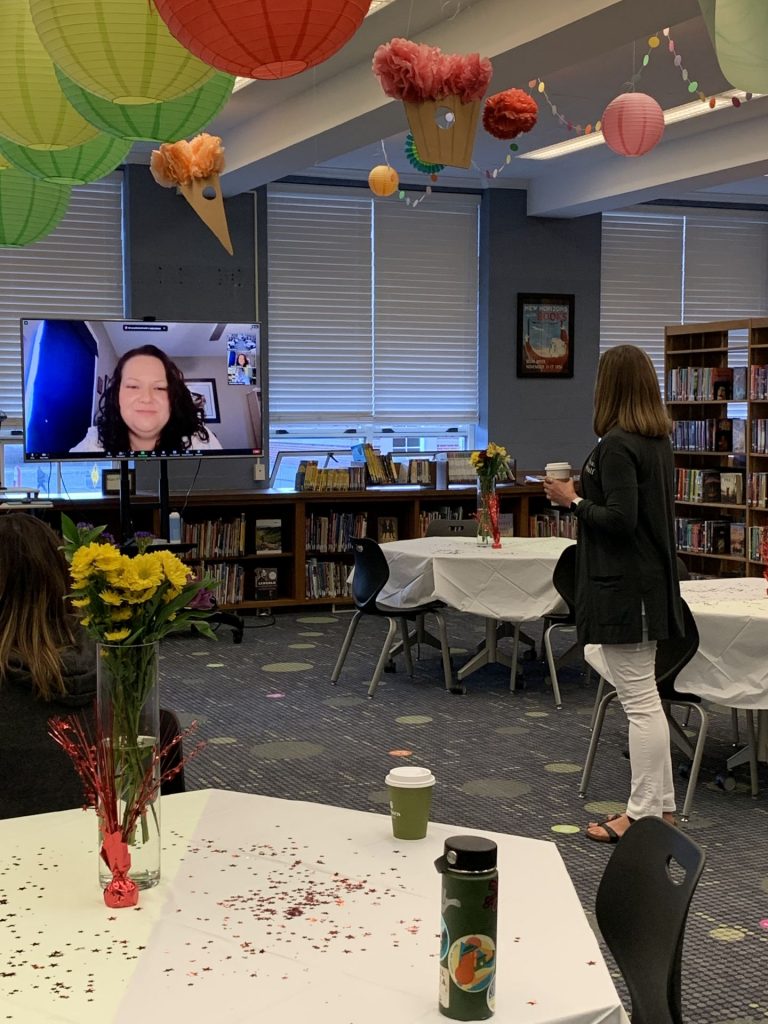A team of authors in the College of Education recently published a new book that delves into the importance of read-aloud experiences for young children, focusing on active engagement with the literature through impactful classroom discussions.
The idea for the book, Book Talk: Growing Into Early Literacy Through Read-Aloud Conversations, grew out of a research project initiated by former associate professor in the School of Teaching and Learning, Sherry Sanden. Sanden wanted to explore how young children respond during read-aloud experiences and reached out to area early childhood teachers to participate.
“I wanted this study to co-create understandings about how students responded during read alouds and the pedagogical moves the teachers used to enable them,” said Sanden.
One of the participants Sanden invited was a former graduate student of hers, Cassandra Mattoon ’97, M.S. ’12, who was a pre-school teacher at that time in Metcalf School. She has since moved on to teach Kindergarten in Metcalf.
During the research, Mattoon recorded her class’s read-aloud sessions, which were then transcribed. Sanden then met with each research participant individually to talk about their read-aloud sessions and the discussions that took place in the classroom.
“As we worked together throughout the study, Cassandra and I had rich discussions about the read alouds and continued to develop questions for further investigation,” said Sanden. “We were so excited that we kept saying, somewhat in jest, that we should write a book. So, we did!”
The two decided to write a few chapters and sent them off to publishers to see if there was any interest. Their proposal was accepted by Teachers College Press, and the two of them completed a few more chapters based on their findings to submit. At this point, editors recommended the possibility of bringing an additional voice into the process to more adequately address the needs of dual language learners. That’s when Sandra Osorio, associate professor in the School of Teaching and Learning and expert in early literacy learning for multi-lingual students, got involved.
“I had been doing similar research with a professional learning community of teachers in Urbana through a University Research Grant,” said Osorio. “So, when I was asked to participate in writing this book, I jumped at the chance.”
The three authors met to discuss what chapters should be in the book and assigned each chapter to one of the members based on each other’s strengths, with Sanden ultimately responsible for pulling the chapters together into one voice. Chapters included topics such as setting up the classroom reading environment, selecting books, and setting goals; all while focusing on addressing the needs of a diverse student population. Each chapter includes academic information melded with recommendations and examples of how to implement the ideas in the classroom. The key takeaway of the book is the importance of the discussion that takes place during read alouds, which is where teachers really engage their students to have meaningful conversations about what they’re reading or listening to.
The primary audiences for the book are pre-service and practicing teachers. Having all led early childhood classes at some point in their careers, the authors hope that their readers will approach the book from a growth mindset and use it to think about how to learn along with their students and improve their own in-class practices.
“We talked a lot about making sure this wasn’t just a checklist for teachers,” said Mattoon. “We want readers of the book to apply the information to be able to constantly develop how they’re organizing literacy in the classroom.”
Once the book was published, Metcalf principal Dr. Jason Surian wanted to do something special to show support of Mattoon’s involvement in the writing of a book. He and school librarian, Kara Story, planned a surprise book launch at the school, inviting faculty associates, as well as Osorio and Sanden, to attend either in person or virtually. They even created a large cutout of the book for the event, which Mattoon uses to illustrate the need for patience when her students express frustration with their own writing in class.
All three of the authors stress the importance of flexibility and communication to their successful collaboration. They also noted the importance of matching the research interests of faculty and lab school teachers and building relationships to develop new ideas for research that can be beneficial to both groups. This might sound like common sense, but it can prove challenging when both groups are pulled in a variety of directions with their day-to-day duties.
“Sometimes as faculty we can be a bit too rigid about a project that interests us,” said Osorio. “We have an idea, and we try to find teachers willing to use their classroom for the research. Instead, I would encourage faculty to have flexibility and develop the entire research project with the teachers themselves. This will help create research that is more applicable for teachers in the classroom.”
While there are already several collaborations happening between College of Education faculty and the Lab schools, Mattoon strongly recommended anyone gets involved with a research project.
“This process allowed me to think about research in a new way. Faculty didn’t just drop into my classroom to utilize research subjects,” said Mattoon. “They wanted to create a situation that was real and practical for what I do in the classroom on a day-to-day basis.” Having authors with such varied experiences contribute to the research and writing ultimately resulted in a book with multiple perspectives that can be utilized by educators from any background.


